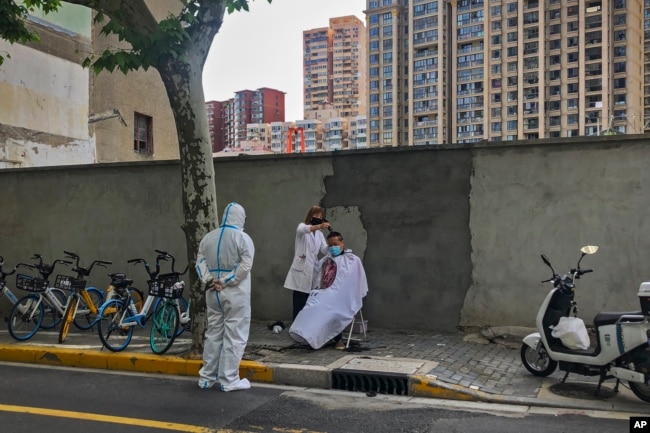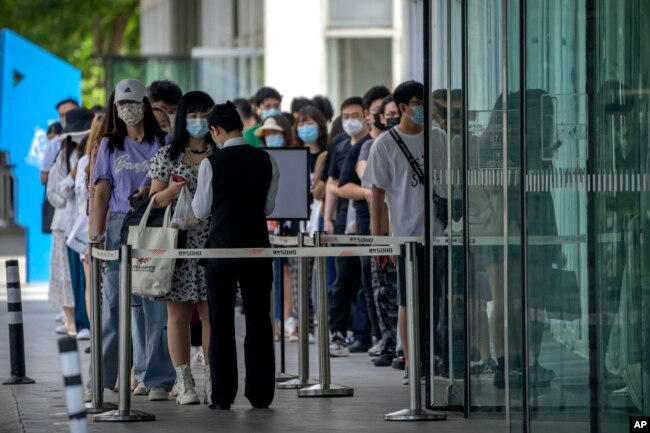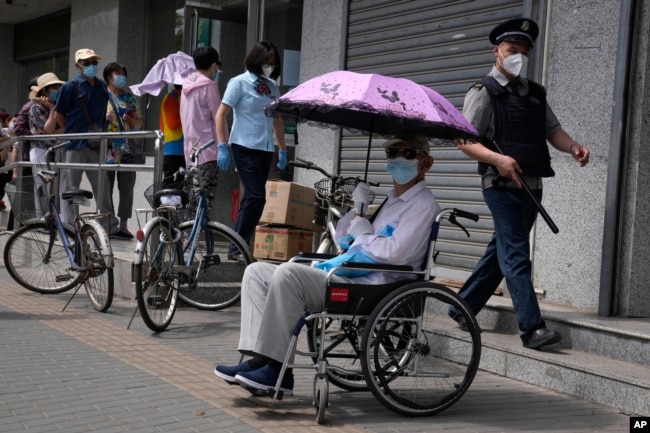ロックダウンの上海の今
緩和するとはいえ、まだまだこれだけ徹底しているとは、驚きです!!
さらに、ロックダウンによる”国民の怒り”は本当だったのでしょうか?
そんなはずはないように思います。
早速VOAで現状を聴いてみましょう!!
上海、COVID-19の2カ月間の閉鎖を緩和(和訳)
Shanghai Eases 2-Month COVID-19 Lockdown
June 1,2022
中国最大の都市、上海の当局者は、2ヶ月間実施されてきた大規模なパンデミック規制を解除することに同意しました。
この変更は水曜日に実施と予定されました。Zong Ming副市長は、火曜日に記者団に、バスと地下鉄の完全なサービスが再開され、中国の他の地域との列車のリンクも可能になると語りました。
Zong氏は、同市の最新のCOVID-19の発生を "効果的にコントロールし、状況は改善し続ける "と宣言しました。
学校は部分的に自主的に再開される予定です。店舗は75%のキャパシティで営業を開始します。映画館と運動センターは当面閉鎖されたままです。
中国当局は1日、上海の人口2500万人に影響を与える封鎖を命じました。この措置は、COVID-19の蔓延に対抗するための努力の一環でした。この強力な規制は、国民の怒りを広く引き起こしました。混雑した検疫所、食料の入手困難、収入減などの問題が数百万人に影響を及ぼしたのです。
当局はここ数週間、いくつかの措置を緩和する方向に動いていました。しかし、市内の公共交通機関のほとんどは依然として閉鎖されたままであり、許可を得た場合のみ運転が可能です。
水曜日には50万人以上が自宅から出ることを許されません。このうち19万人は監禁区域に留まり、さらに45万人はCOVID-19の感染者がまだ広がっている地域に住んでいます。
上海では、月曜日に29件の新たな感染者が発生しました。これは4月の1日の感染者2万件以上から減少しています。
Li Qiang氏は上海にある中国与党共産党の最高幹部です。地元メディアは、彼が月曜日の政府会議で、市は継続的な闘争を通じて、発生との戦いに大きな進歩を遂げたと述べたと報じました。
全市的な封鎖は、中国の”ゼロCOVID”政策の下で命じられなした。これは、大量の検査を実施し、感染者を検疫センターに送ることによって、新たな発生を迅速に遅らせることを目的としています。
巨大な臨時センターが設置され、陽性と判定された数千人の人々が収容されました。医療従事者やその他の労働者のチームが中国の他の地域から呼び寄せられ、この取り組みの運営を支援しました。
ほとんどの工場は閉鎖されました。中には、ウイルスの拡散を防ぐために、労働者が製造センターで寝泊まりする場合にのみ操業が許可された工場もありました。
他の国々が国境を開放し、”ウイルスと共存”しようとする中で、地元の指導者たちは繰り返し中国の”ゼロ・コロナ”政策への支持を表明しました。
外部のエコノミストは、中国が今年の成長率目標である5.5%に到達しないだろうと広く予想しています。しかし、最新の経済データでは、政府がいくつかの制限を緩和したため、5月に製造活動が戻り始めたことが示されています。
学校は高校最後の2年間と中学3年間が再開されますが、生徒が直接出席するかどうかを決めることができます。その他の学年と幼稚園は休校のままです。
中国の首都、北京では、当局が火曜日、一部の地域でパンデミック規制をさらに緩和しました。北京は、より小規模な流行が発生した際に、一部の地域で限定的な閉鎖を命じていました。同市では、月曜日に18人の新規感染者を記録しました。
Shanghai Eases 2-Month COVID-19 Lockdown
Officials in China’s largest city, Shanghai, have agreed to lift major pandemic restrictions that have been in place for two months.
The changes were set to take effect Wednesday. Full bus and subway service will be restarted, along with train links to the rest of China, Vice Mayor Zong Ming told reporters Tuesday.
Zong declared that the city’s latest COVID-19 outbreak “has been effectively controlled and the situation continues to improve.”
Schools will partly reopen on a voluntary basis. Stores will begin operating at 75 percent capacity. Movie theaters and exercise centers will remain closed for now.
Chinese officials ordered a lockdown on April 1, which affected Shanghai’s 25 million people. The measure was part of an effort to fight the spread of COVID-19. The strong restrictions caused widespread public anger. Issues such as crowded quarantine centers, difficulties getting food and loss of income affected millions.
Officials moved to ease some of the measures in recent weeks. But most of the city’s public transport system remained closed and people could only drive if they received permission.
More than half a million people will not be permitted to leave their homes Wednesday. This includes 190,000 who remain in lockdown areas and another 450,000 who live in communities where COVID-19 cases are still spreading.
Shanghai recorded 29 new cases on Monday. That was down from more than 20,000 cases a day in April.
Li Qiang is the top official from China's ruling Communist Party in Shanghai. Local media reported he told a government meeting on Monday that the city had made major progress fighting the outbreak through continuous struggles.
The citywide lockdown was ordered under China's “zero-COVID” policy. It aims to quickly slow new outbreaks by carrying out mass testing and sending infected people to quarantine centers.
Huge temporary centers were set up to house thousands of people who had tested positive. Teams of health care and other workers were brought in from other parts of China to help run the efforts.
Most factories were closed. Some were permitted to operate only if workers slept at the manufacturing centers to prevent spread of the virus.
Local leaders repeatedly expressed support for China’s “zero-COVID” policy even as other countries opened their borders and attempted to “live with the virus.”
Outside economists widely expect that China will not to reach its 5.5 percent growth target for this year. However, the latest economic data showed that manufacturing activity started to return in May as the government eased some restrictions.
Schools will reopen for the final two years of high school and the third year of middle school, but students can decide whether to attend in person. Other grades and kindergarten remain closed.
In China’s capital, Beijing, officials eased pandemic restrictions further Tuesday in some areas. Beijing had ordered limited lockdowns in some areas during a much smaller outbreak. The city recorded 18 new cases on Monday.
Words in This Story
capacity – n. the largest amount that something can hold
lockdown – n. an emergency situation in which people are not permitted to freely enter, leave or move around a building or area
quarantine – n. the period of time during which a person or animal that has a disease or that might have a disease is kept away from others to prevent the disease from spreading
positive – adj. in a medical test, positive means the person being tested has a disease or condition



